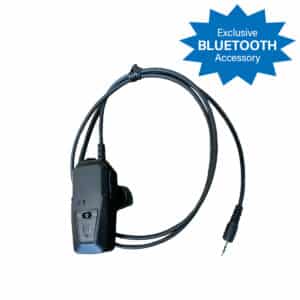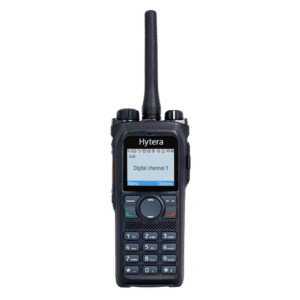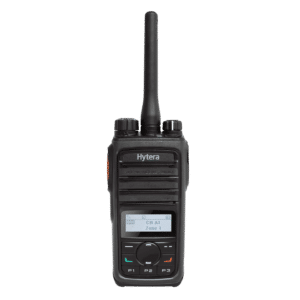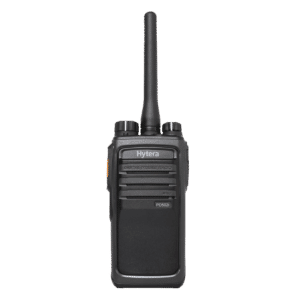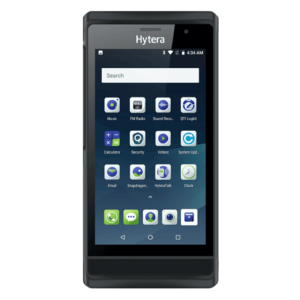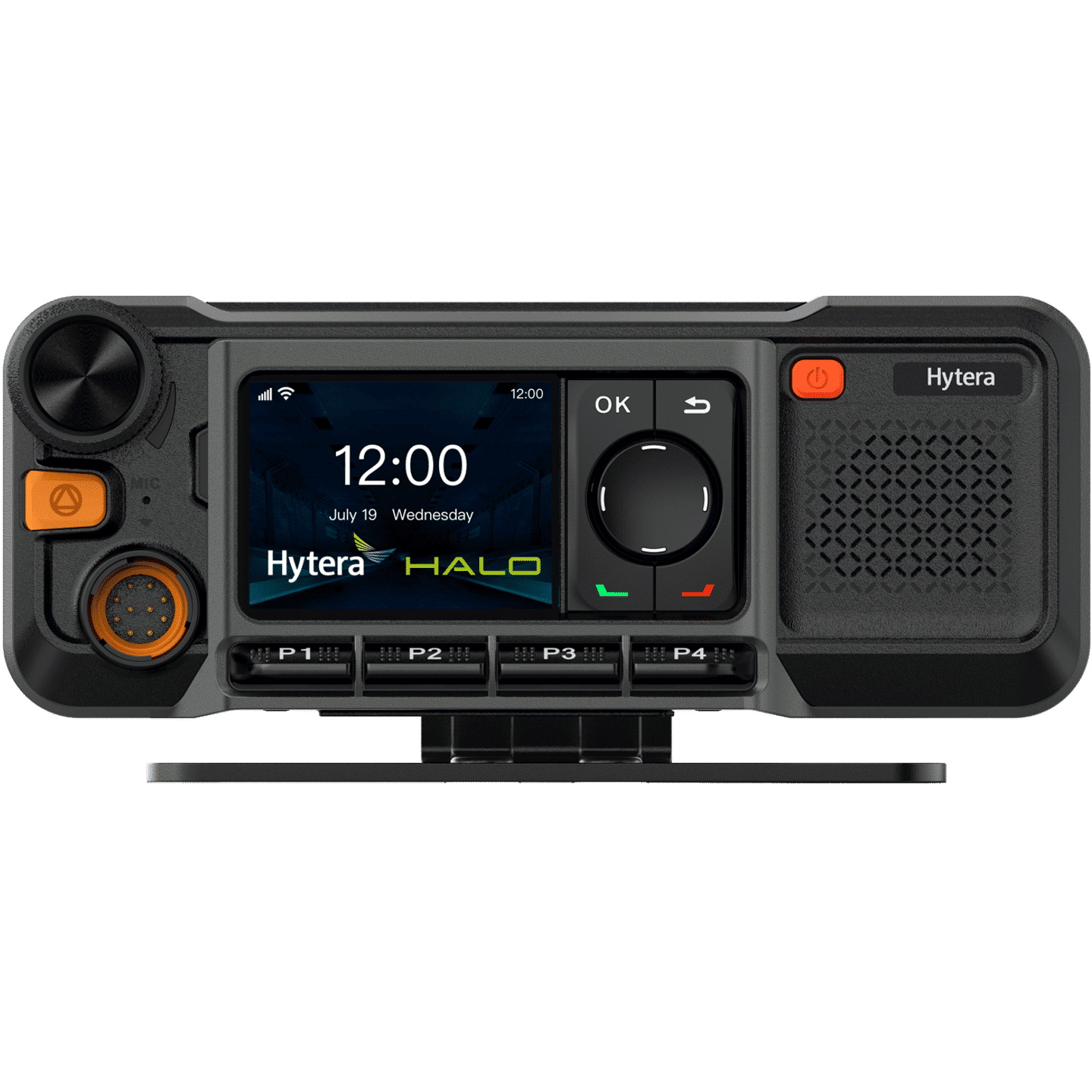1. Introduction
1.1. Importance of Hearing Protection in Industrial Settings
In the bustling and hazardous landscape of industrial environments, safeguarding workers’ hearing is not just a health initiative but a regulatory and economic imperative. Industries such as manufacturing, construction, mining, and logistics expose workers to persistent high-decibel noise levels that, without proper protection, can lead to irreversible hearing damage. According to the Occupational Safety and Health Administration (OSHA), approximately 22 million workers in the United States are exposed to potentially damaging noise levels each year. This exposure contributes to occupational hearing loss, which ranks among the most common work-related health issues.
The economic impact of hearing loss extends beyond healthcare costs and can influence productivity and worker retention. The National Institute for Occupational Safety and Health (NIOSH) estimates that occupational hearing loss costs employers millions annually in compensation and lost productivity. These staggering statistics underscore the urgent need for effective hearing protection that not only shields workers from harmful noise but also supports clear and effective communication.
1.2 Evolution of Hearing Protection Devices (HPDs)
The journey of hearing protection devices (HPDs) reflects the progress of technology aimed at improving worker safety. Early solutions were simple, passive earplugs or earmuffs designed to create a physical barrier against noise. While these devices were effective in blocking sound, they were not adaptable and often limited a worker’s ability to hear important sounds such as alarms, machinery malfunctions, or speech. This gap posed a risk to safety and workflow efficiency.
The advent of active hearing protection marked a significant step forward, utilizing electronic components to amplify desired sounds while attenuating harmful noise. Innovations in digital signal processing (DSP) paved the way for more refined control of sound, enabling workers to hear conversations and crucial environmental audio while maintaining protection. These advancements led to a new class of smart HPDs equipped with wireless connectivity, providing a balance between protection and accessibility.
With the integration of wireless standards such as Bluetooth and newer protocols, modern hearing protection solutions are now part of a connected ecosystem that enhances communication. This capability ensures that workers in noisy environments remain connected without compromising their safety or productivity. By bridging the gap between robust hearing protection and seamless connectivity, these smart earplugs have redefined what is possible in personal protective equipment (PPE).
1.3 Top Industries Affected by Occupational Hearing Loss
Occupational hearing loss remains a widespread and critical issue across various industries where exposure to high-decibel noise is part of daily operations. The following industries are most affected by this occupational hazard:
Manufacturing:
The manufacturing sector is one of the leading industries impacted by hearing loss due to the constant operation of heavy machinery, presses, conveyor systems, and power tools. Workers in automotive, metal fabrication, and textile manufacturing are frequently exposed to noise levels that exceed the safe threshold of 85 decibels, necessitating robust hearing protection measures.
Construction:
Construction sites are notoriously loud, with noise generated from drills, jackhammers, bulldozers, and other heavy equipment. The intermittent nature of these sounds, combined with their high intensity, poses a significant risk to hearing. Prolonged exposure without adequate protection can lead to permanent hearing damage, making the construction industry one of the most vulnerable sectors for noise-induced hearing loss.
Mining and Quarrying:
The mining industry involves the use of large drilling equipment, explosives, and crushing machinery, all of which create a highly noisy environment. Underground mining further amplifies sound due to confined spaces, placing workers at an even higher risk of auditory damage. Studies have shown that miners experience some of the highest rates of occupational hearing loss across all industrial sectors.
Oil and Gas Extraction:
Workers in oil rigs and gas extraction sites face constant exposure to high noise levels produced by drilling machinery, pumps, and heavy engines. The combination of noise, harsh environmental conditions, and prolonged work shifts elevates the risk of hearing damage. Ensuring adequate hearing protection in these environments is crucial to maintaining worker health and safety.
Transportation and Logistics:
The transportation industry, including aviation, railways, and logistics hubs, exposes workers to noise from engines, turbines, and loading equipment. Baggage handlers, train operators, and warehouse staff are particularly at risk, as they are consistently exposed to loud environments that may exceed safe exposure limits.
Agriculture:
While it might not seem intuitive, agriculture workers also face significant risks from noise pollution. Tractors, combines, grain dryers, and other farm machinery often produce noise levels that are hazardous to hearing over time. The rural and open nature of these workplaces may lead to a lack of immediate safety measures, emphasizing the need for effective hearing protection solutions.
Entertainment and Event Production:
The music and entertainment industry can also be a source of significant hearing risks, particularly for concert workers, sound engineers, and stage crew members. These professionals are frequently exposed to sound levels that surpass 100 decibels during live performances or while setting up and testing audio equipment.
Common Challenges Across These Industries:
All these industries share common challenges in implementing comprehensive hearing protection, including:
+ Compliance and Monitoring: Ensuring workers consistently wear hearing protection and adhere to safety protocols can be difficult, especially in fast-paced environments.
- Communication Needs: Workers in noisy settings still need to communicate effectively with teammates, posing a challenge for traditional earplugs and passive noise-canceling devices.
- Worker Awareness and Training: Educating workers on the risks of hearing loss and the importance of wearing protective equipment is essential but not always fully enforced.
The increasing use of smart earplugs that combine hearing protection with connectivity can help address these challenges by allowing workers to stay protected while maintaining effective communication and situational awareness.
2. Traditional Hearing Protection vs. Smart Solutions
2.1 Overview of Traditional Hearing Protection
Traditional hearing protection has long been the first line of defense against noise-induced hearing loss in industrial settings. Standard options include foam earplugs, earmuffs, and custom-molded ear inserts. These devices operate on a passive basis, relying on their physical properties to block sound waves and reduce noise exposure.
While effective in attenuating high decibel levels, traditional solutions have significant limitations. One major drawback is their inability to differentiate between harmful noise and essential auditory signals, such as safety alarms or spoken communication. This inability can lead to potentially dangerous situations where workers are isolated from critical sound cues. Furthermore, passive ear protection can feel uncomfortable during prolonged use, which sometimes results in inconsistent wear compliance and diminished effectiveness.
2.2 The Advent of Active Hearing Protection
To address these shortcomings, active hearing protection devices (HPDs) were developed. These devices incorporate electronic components that enhance their adaptability. By using microphones and speakers, active HPDs are capable of amplifying low-level sounds, such as conversations, while simultaneously suppressing loud, potentially damaging noises. This innovation allowed workers to maintain situational awareness without sacrificing protection.
Active HPDs employ technologies like electronic filters and digital signal processing (DSP) to fine-tune noise reduction. This functionality marked a turning point in hearing protection, but it still fell short of integrating with the broader communication needs of a modern, connected industrial workforce.
2.3 Technical Architecture of Smart Earplugs
Smart earplugs represent the next evolutionary step in hearing protection, combining the best of both passive and active solutions with advanced connectivity features. The technical architecture of these devices is built around several core components:
Microprocessor and DSP Components:
Smart earplugs are equipped with microprocessors that control various functions, including adaptive noise cancellation, signal filtering, and sound amplification. Digital signal processing (DSP) technology plays a crucial role by analyzing and modifying sound waves in real time, allowing for precise control over what the user hears.
MEMS Microphones and Speakers:
The use of micro-electro-mechanical systems (MEMS) microphones and speakers enables these devices to be compact yet highly sensitive. MEMS technology provides the capability for clearer sound capture and playback, ensuring that speech and other important sounds are heard with clarity even in noisy environments.
Wireless Communication Modules:
Wireless connectivity, typically achieved through Bluetooth 5.0 or newer protocols, allows smart earplugs to interface with communication systems such as radios, smartphones, and IoT platforms. This feature ensures that workers can receive real-time instructions and updates without removing their protective equipment, greatly enhancing safety and productivity.
Environmental Sensors Integration:
Many smart earplugs include additional sensors that detect environmental changes, such as sudden noise spikes or hazardous conditions. These sensors can trigger alerts or adjust the device’s sound profile automatically, enhancing situational awareness and protecting workers in dynamic settings.
Bridging the Gap: Smart Solutions in Practice
Smart earplugs are designed not only to shield workers from harmful noise but also to improve overall communication and connectivity within the workplace. With features like adaptive sound management, speech enhancement, and seamless integration with industrial communication networks, these devices offer a dual benefit: safeguarding workers’ hearing and enabling clear, effective communication.
The shift from traditional hearing protection to smart solutions aligns with the broader move toward digital transformation in industrial operations. These advanced earplugs are part of a larger ecosystem that supports worker safety, real-time data exchange, and operational efficiency. The result is a safer, more connected, and highly adaptable workforce that can respond swiftly to changing conditions without compromising hearing protection.
3. Key Technologies and Features
3.1 Sound Management and Adaptive Noise Cancelling
Modern smart earplugs incorporate sophisticated sound management features that go far beyond traditional noise reduction. At the forefront is active noise cancellation (ANC), a technology that uses onboard microphones to pick up external sounds and produce anti-noise signals that cancel out unwanted sound waves. This is particularly effective in industrial settings where continuous, high-frequency noise from machinery can cause auditory fatigue and long-term damage.
Overview of Active Noise Cancellation (ANC):
ANC operates by capturing environmental noise and generating an opposing sound wave to neutralize it. This allows workers to experience significantly reduced noise levels, creating a safer and more comfortable working environment. The technology ensures that damaging noise is blocked while allowing the earplug user to stay aware of crucial sounds.
Smart Filtering for Ambient Noise Awareness:
A vital aspect of smart earplugs is their ability to selectively filter noise. Smart filtering enables workers to maintain situational awareness by allowing important ambient sounds—such as conversations, alarms, or vehicle horns—to pass through while blocking harmful background noise. This is particularly useful in settings where constant vigilance is necessary for safety.
Advanced DSP Algorithms for Speech Enhancement:
Digital signal processing (DSP) algorithms enhance the ability to discern speech amidst loud background noise. By isolating voice frequencies and amplifying them, these earplugs facilitate clear communication between team members without the need for shouting or removing protective devices. This not only improves communication but also reduces the risk of errors caused by misheard instructions.
Frequency-Selective Noise Reduction:
Frequency-selective noise reduction allows smart earplugs to target specific ranges of sound. For example, low-frequency rumbling from heavy machinery can be minimized without affecting higher-pitched safety alerts. This tailored approach to noise management maximizes protection while ensuring that critical auditory cues remain intact.
3.2 Wireless Communication Systems
One of the defining features of modern smart earplugs is their seamless wireless communication capabilities. These technologies ensure that workers are always connected, supporting both safety and productivity.
Bluetooth 5.0+ Capabilities and Limitations:
Bluetooth 5.0 and newer versions are widely used in smart earplugs, offering improved range, faster data transfer rates, and lower energy consumption. This allows users to stay connected to smartphones, communication radios, and IoT devices for seamless integration into existing systems. However, Bluetooth’s performance can be limited in environments with heavy RF interference or structures that obstruct signal propagation.
Ultra-Wideband (UWB) Integration Possibilities:
Ultra-wideband technology offers an alternative to Bluetooth by providing more precise location tracking and enhanced data transmission in crowded signal environments. This makes UWB ideal for applications where precise tracking of personnel is necessary, such as in large industrial complexes or hazardous areas requiring quick location pinpointing during emergencies.
Mesh Networking for Enhanced Coverage:
Mesh networking allows multiple devices to communicate and relay signals across an extensive area, ensuring that workers remain connected even in complex or large-scale industrial settings. This can greatly improve communication reliability, particularly in places where traditional signal strength might be weak or compromised.
RF Protocols Optimized for Industrial Environments:
Specialized RF (radio frequency) protocols have been developed to enhance communication in industrial environments where standard consumer protocols might fall short. These protocols are designed to minimize latency, provide robust data transfer, and ensure that critical safety communications are received without delay.
Latency Considerations in Safety-Critical Communications:
In industrial settings, low-latency communication is crucial for real-time updates and alerts. Smart earplugs that support optimized communication protocols ensure that data transmission is not only secure but also fast, reducing the risk of delayed responses that could compromise safety.
3.3 Data Tracking and Compliance Tools
The incorporation of data tracking and compliance tools into smart earplugs helps employers monitor safety protocols and adhere to industry regulations. These tools can log noise exposure levels, track usage compliance, and generate reports for safety audits. Real-time data on worker exposure can be analyzed to prevent hearing damage proactively and improve overall safety.
Automated Reporting:
Smart earplugs can automatically compile data on noise levels and usage patterns, simplifying the process of regulatory compliance and facilitating more accurate record-keeping.
Compliance Monitoring:
By monitoring when and how hearing protection is used, employers can ensure that safety protocols are being followed and identify any lapses in compliance, thereby improving training and safety measures.
3.4 Power and Battery Management
Power efficiency is key in ensuring that smart earplugs remain operational throughout a worker’s shift.
Advanced Power Management IC Solutions:
Smart earplugs are equipped with power management integrated circuits (ICs) that optimize energy use, extending the battery life of devices while maintaining consistent performance.
Quick-Charging Technologies:
Quick-charge capabilities allow devices to recharge within short breaks, minimizing downtime and ensuring continuous protection for users.
Power Optimization Algorithms:
Advanced algorithms help manage power distribution within the device by prioritizing functions based on current needs, such as switching between high-power noise cancellation and lower-power ambient modes.
Backup Power Solutions for Critical Functions:
Some smart earplugs include backup power options or low-power modes to maintain basic functions even if the primary battery runs low. This feature ensures that safety features remain operational until a full recharge is possible.
3.5 Sensor Integration
Sensors embedded within smart earplugs expand their functionality beyond noise management.
Accelerometers for Fall Detection:
Built-in accelerometers can detect sudden movements or falls, triggering alerts and enabling faster emergency responses.
Biometric Monitoring Capabilities:
Biometric sensors can monitor worker vitals, such as heart rate or temperature, adding an extra layer of health monitoring.
Environmental Hazard Detection:
Sensors capable of detecting toxic gases or sudden temperature changes can provide critical alerts, enabling timely evacuation or protective measures.
Spatial Awareness Sensors:
Advanced sensors can enhance spatial awareness by tracking a user’s position relative to moving equipment or potential hazards, reducing the risk of accidents.
4. Implementation and Integration
4.1 Steps for Integrating Smart Earplugs into Industrial Environments
The successful integration of smart earplugs into industrial settings requires a comprehensive approach that addresses both technical and organizational aspects. Here’s how to effectively introduce these advanced devices into a workplace:
Needs Assessment and Planning:
Begin with an in-depth assessment of the noise exposure levels, communication needs, and existing safety measures within the facility. This assessment will help tailor the implementation to suit specific operational requirements and safety standards.
Pilot Programs:
Conduct pilot programs to evaluate the practical performance of smart earplugs in real work conditions. These programs provide valuable feedback on user experience, device effectiveness, and any necessary adjustments before a full-scale rollout.
Training and User Education:
Comprehensive training sessions are essential for ensuring that workers understand the features and proper usage of smart earplugs. Training should cover device operation, troubleshooting, and best practices for maintaining safety compliance.
Integration with Existing Systems:
Connect smart earplugs to current communication networks and safety monitoring systems. This integration may involve collaborating with IT teams to align device connectivity, ensuring seamless data flow between earplugs and the company’s broader digital infrastructure.
Feedback and Iteration:
Post-implementation feedback from workers can reveal additional areas for optimization. Iterative improvements based on user input help fine-tune device settings and improve overall adoption rates.
4.2 Ensuring Seamless User Adoption
For any new technology to be successful, it must be embraced by its users. The following strategies can facilitate a smooth transition to smart earplug use:
User-Friendly Design:
Choose smart earplugs that prioritize comfort and simplicity. If devices are too cumbersome or difficult to use, compliance rates may drop, jeopardizing safety goals.
Supportive Infrastructure:
Ensure that charging stations and support resources are readily available to prevent downtime. Workers should have easy access to replacements or maintenance services if needed.
Incentive Programs:
Consider implementing incentive programs that reward proper and consistent use of smart earplugs. Positive reinforcement can enhance compliance and encourage employees to integrate the devices into their daily routines.
4.3 Customization and Personalization
Customization options are crucial for aligning smart earplugs with various work environments and individual preferences:
Adjustable Sound Profiles:
Allowing workers to adjust sound profiles based on their specific needs ensures that smart earplugs provide optimal performance. This is especially important in jobs that require intermittent communication or variable noise exposure levels.
Individual Fit and Comfort Options:
Custom-molded earplugs or adjustable fittings can significantly improve wearability, making it easier for workers to keep their protective devices on throughout their shifts.
Software Updates and Personalization:
Regular firmware updates should be provided to keep devices functioning at their best. Additionally, customization through companion apps allows users to fine-tune settings such as ambient sound levels, noise cancellation strength, and alert preferences.
4.4 Network Infrastructure Requirements
Integrating smart earplugs into an industrial environment often necessitates a robust network infrastructure. The following considerations are key for ensuring effective device operation:
Coverage Planning and Optimization:
Industrial settings can present challenges for wireless signal coverage due to large machinery, structural barriers, and metallic interference. Conducting a site survey and deploying repeaters or mesh networking solutions can help maintain strong connectivity across the entire workspace.
Redundancy and Failover Systems:
Implementing backup communication systems ensures that critical functions continue even if primary networks experience disruptions. This redundancy is vital for maintaining safety protocols and preventing workflow interruptions.
Edge Computing Integration:
Incorporating edge computing capabilities allows data processing to occur closer to the source (i.e., on-site). This setup minimizes latency and enhances the reliability of real-time alerts and data tracking, which is crucial for safety and efficiency.
Security Infrastructure Setup:
Ensuring that smart earplugs are integrated securely into the network involves implementing secure access points, encrypted communication protocols, and robust firewalls. Regular security audits and updates help protect data and maintain compliance with industry standards.
4.5 Overcoming Common Integration Challenges
While smart earplugs offer considerable advantages, their implementation can present challenges:
RF Interference Management:
High levels of radio frequency (RF) interference from other machinery can affect device performance. Using frequency-hopping technologies and shielded communication channels can mitigate these issues.
Device Compatibility:
Integrating new technology with existing systems may pose compatibility challenges. Ensuring that new devices adhere to standard communication protocols and that they are backward compatible with older systems can facilitate smoother integration.
User Resistance to Change:
Introducing new safety equipment can sometimes be met with skepticism or reluctance. Addressing these concerns through transparent communication, demonstrations, and opportunities for hands-on trials can help build trust and acceptance among employees.
Maintenance and Support:
Regular maintenance is necessary to keep devices in optimal condition. Having a structured maintenance plan, including scheduled firmware updates and component checks, ensures long-term functionality.
5. Benefits and ROI
5.1 Enhanced Worker Safety and Protection
The primary advantage of smart earplugs is the significant enhancement of worker safety and protection in noisy industrial settings. Unlike traditional earplugs, which merely block sound, smart earplugs actively manage noise exposure and enable users to remain aware of essential sounds in their environment. This selective sound filtering can dramatically reduce incidents where critical alerts or communication go unnoticed, thus preventing accidents and improving overall workplace safety.
Impact on Hearing Health:
Smart earplugs help mitigate noise-induced hearing loss (NIHL), which is one of the most prevalent occupational hazards. By continuously monitoring noise levels and adjusting protection in real-time, these devices ensure that workers are safeguarded from sudden noise spikes and prolonged exposure to harmful decibel levels. The result is not only better hearing preservation but also compliance with stringent safety standards set by organizations such as OSHA and NIOSH.
Emergency Response Enhancement:
Integrated sensors and connectivity features improve emergency response times by alerting workers to hazardous conditions immediately and allowing for quick communication. For example, smart earplugs can be programmed to amplify emergency alarms or provide voice instructions in case of a fire or chemical leak.
5.2 Improved Communication and Workflow Efficiency
Smart earplugs bridge the gap between hearing protection and communication, enabling seamless dialogue in environments where conventional speech would be drowned out by industrial noise. The following features contribute to enhanced workflow efficiency:
Clear Two-Way Communication:
With embedded microphones and speakers, workers can participate in conversations or coordinate tasks without having to remove their ear protection. This is particularly advantageous in dynamic work environments where quick decisions and real-time collaboration are essential.
Hands-Free Operations:
Voice-activated controls allow workers to operate the earplugs without manual input, maintaining productivity while keeping hands available for tasks. This feature is especially valuable for jobs that require constant use of machinery or tools.
Adaptable Sound Profiles:
Workers can adjust their sound profile according to their specific tasks, ensuring that they receive the most relevant audio inputs while minimizing distractions. This customization supports uninterrupted workflow and reduces cognitive fatigue caused by excessive noise or isolation from necessary sounds.
5.3 Cost Savings and Return on Investment (ROI)
The economic benefits of implementing smart earplugs extend beyond immediate safety enhancements. Investing in smart hearing protection yields substantial long-term ROI through various channels:
Reduced Hearing Loss Compensation Claims:
Companies that integrate advanced hearing protection measures can significantly lower their liability related to hearing damage compensation. By proactively reducing noise-induced hearing issues, employers save on medical costs and potential litigation fees.
Lower Absenteeism and Turnover:
Improved working conditions, facilitated by effective hearing protection and communication tools, contribute to higher job satisfaction and reduced absenteeism. When workers feel safe and connected, they are more likely to remain engaged and committed to their roles, lowering turnover rates and associated recruitment and training costs.
Enhanced Productivity:
The ability to communicate clearly in high-noise environments leads to fewer operational delays and mistakes. This efficiency translates into better workflow management and increased productivity, directly impacting a company’s bottom line.
Reduced Equipment Damage and Downtime:
Data tracking and noise analysis capabilities help identify operational trends and preventively address issues that could lead to equipment failure. By detecting unusual sound patterns or environmental hazards early, companies can conduct maintenance proactively, reducing unplanned downtime and associated costs.
5.4 Data Analytics and Predictive Maintenance
One of the most innovative features of smart earplugs is their capability to collect and analyze data. This functionality not only supports regulatory compliance but also contributes to predictive maintenance strategies and operational optimizations:
Machine Learning for Pattern Recognition:
Embedded sensors collect data that can be processed using machine learning algorithms to identify patterns in noise levels and worker behaviors. For instance, if certain areas consistently present higher-than-expected noise exposure, this insight allows for adjustments in procedures or protective measures.
Predictive Maintenance of Devices:
Smart earplugs can signal when their components are nearing the end of their functional life, ensuring timely maintenance and minimizing the risk of unexpected failures. This predictive capability extends the lifespan of the devices and ensures continuous protection for workers.
Worker Behavior Analysis and Optimization:
Data can be used to track how workers interact with their environment and their adherence to safety protocols. This information helps managers make informed decisions about training, safety program enhancements, and workflow adjustments to optimize overall performance.
Environmental Trend Analysis:
By logging environmental noise data over time, smart earplugs help companies analyze trends and make data-driven decisions about workplace safety improvements and equipment upgrades. This continuous feedback loop supports proactive management, which further reduces risks and operational inefficiencies.
6. Enhanced Compliance and Auditing
Smart earplugs contribute significantly to compliance with occupational safety standards. The ability to generate automated reports on noise exposure and device usage simplifies the audit process and ensures accurate record-keeping. This is essential for:
Regulatory Compliance:
Meeting standards set by OSHA, NIOSH, and other governing bodies becomes simpler when detailed exposure data can be presented quickly and accurately. This capability reduces the administrative burden on safety managers and helps maintain compliance effortlessly.
Safety Certification Support:
Demonstrating the use of cutting-edge hearing protection technology supports a company’s reputation and may facilitate certification processes, contributing to higher trust among clients and stakeholders.
7. Future Developments and Trends
7.1 Advanced Connectivity Technologies
The future of smart earplugs in industrial settings is marked by significant advancements in connectivity. These innovations promise to enhance both the functionality and user experience of hearing protection devices.
5G/6G Private Networks Integration:
The integration of 5G and the development of 6G technology offer unprecedented opportunities for smart earplug functionality. Private 5G networks in industrial environments can provide ultra-reliable, low-latency communication, which is essential for real-time audio transmission and safety-critical updates. The future rollout of 6G could further improve bandwidth, speed, and device-to-device communication, enabling a more robust connection between workers and their operational ecosystems.
Advanced Mesh Networking Protocols:
Future iterations of mesh networking will likely expand on current capabilities to ensure uninterrupted communication over wider areas. Enhanced mesh networks will support seamless data exchange between multiple devices, ensuring that workers maintain connectivity even in large, complex industrial sites where traditional signals may struggle.
AI-Driven Adaptive Communication:
Artificial intelligence (AI) will play a significant role in adapting smart earplug functionality to changing conditions. AI algorithms can learn from environmental audio patterns and predict the best settings for noise cancellation, speech enhancement, or alert prioritization based on real-time data. This adaptability can further increase safety and reduce the cognitive load on workers by automatically optimizing device performance.
7.2 Enhanced Sensing and Processing Capabilities
The next wave of smart earplugs will include cutting-edge sensing and processing technologies that offer deeper insights and improved response mechanisms.
Neural Processing Units for Edge AI:
Smart earplugs equipped with neural processing units (NPUs) will enable more complex audio processing directly at the edge, without needing to rely on cloud computing. This edge AI capability reduces latency and improves responsiveness, making devices more effective at identifying and reacting to sudden changes in the environment, such as equipment malfunctions or safety alarms.
Advanced Spatial Audio Processing:
Enhanced spatial audio technology will allow workers to perceive sound directionally, improving their ability to localize hazards or communicate with colleagues. Spatial processing that simulates real-life audio experiences can be particularly useful for training and emergency preparedness, enabling more immersive auditory simulations.
Contextual Awareness Capabilities:
Future smart earplugs will incorporate sensors that go beyond sound detection to understand the broader context of a worker’s environment. This could include the ability to differentiate between regular ambient noise and sounds that indicate a potential safety issue. Devices may also feature predictive analytics that alert workers before hazardous noise levels are reached, ensuring preemptive action is taken.
7.3 Integration with Industrial IoT (IIoT)
Smart earplugs will become an integral part of the Industrial Internet of Things (IIoT), contributing to a connected and intelligent ecosystem that enhances both safety and operational efficiency.
Digital Twin Integration:
Digital twin technology, which creates virtual replicas of physical assets, can benefit greatly from smart earplug data. Real-time information collected from earplugs, such as noise levels and worker locations, can be fed into a digital twin to provide a comprehensive overview of an industrial site’s operations. This allows managers to simulate scenarios, monitor safety compliance, and make informed decisions based on current data.
Predictive Safety Systems:
IIoT integration will enable predictive safety systems that use data analytics to foresee potential risks and alert workers in advance. For example, a combination of smart earplugs and connected sensors could predict machinery failures or hazardous conditions, allowing for timely preventive measures.
Automated Emergency Response:
In the event of an emergency, smart earplugs can be linked to an automated response system that provides immediate audio instructions and situational updates. This can help guide workers to safety more efficiently and coordinate emergency services with real-time location and status data.
7.4 Extended Reality (XR) Integration
The potential for combining smart earplugs with extended reality (XR) technologies—comprising augmented reality (AR) and virtual reality (VR)—will open new dimensions in safety training, situational awareness, and operational guidance.
Augmented Reality Audio Guidance:
Smart earplugs could pair with AR headsets to provide audio cues that enhance visual data. For example, a worker wearing AR glasses could receive spatially located audio prompts through smart earplugs that guide them toward machinery needing maintenance or indicate the safest route in case of an emergency.
Spatial Audio for Virtual Training:
Virtual reality training programs can leverage smart earplug technology to simulate realistic noise levels and directional sound, creating immersive training experiences that prepare workers for the auditory challenges of their roles. This type of training can significantly improve situational awareness and reaction times in real-world settings.
Multi-Modal Safety Systems:
Future safety systems will likely combine visual, auditory, and haptic feedback to deliver comprehensive alerts. Smart earplugs will be a crucial part of this ecosystem, providing auditory information that complements visual signals from screens or AR displays and physical sensations from haptic wearables.
8. Industry Standards and Certifications
8.1 Wireless Communication Standards
Ensuring that smart earplugs adhere to established wireless communication standards is critical for their effective integration and reliable performance in industrial environments. These standards govern how devices communicate, manage data, and maintain security within a network.
IEEE 802.15 Standards for Industrial Wireless:
The IEEE 802.15 standards, which encompass various wireless personal area networks (WPANs), provide guidelines for low-power, short-range communication. This category includes Bluetooth and other WPAN technologies often used in smart earplugs for efficient data transmission and connectivity. Compliance with IEEE 802.15 ensures that devices operate within a framework that supports interoperability and minimal interference, vital for environments with dense wireless traffic.
Bluetooth SIG Industrial Specifications:
Bluetooth technology has evolved to meet the rigorous demands of industrial applications through improvements in range, speed, and energy efficiency. Bluetooth Special Interest Group (SIG) specifications ensure that smart earplugs support robust, secure communication, and efficient data exchange. Version 5.0 and above offer features like extended range and improved data transfer speeds, which are beneficial for maintaining strong connections in large industrial facilities.
Proprietary Protocol Considerations:
Some manufacturers may develop proprietary communication protocols tailored to meet specific industrial needs, such as low latency, enhanced security, or unique data-handling requirements. While proprietary protocols can offer advantages in customization, they must still align with overarching industry standards to ensure compatibility and compliance with broader communication systems.
8.2 Safety Certifications
For smart earplugs to be deemed safe and effective in industrial settings, they must meet stringent safety certifications. These certifications demonstrate that the devices have undergone rigorous testing and comply with health and safety regulations designed to protect workers.
Intrinsic Safety Certifications:
In environments where explosive gases, dust, or vapors are present, smart earplugs need intrinsic safety certifications such as ATEX (EU) or IECEx (international). These certifications indicate that the devices are designed to prevent ignition under normal and abnormal conditions, reducing the risk of catastrophic accidents.
EMC/EMI Compliance:
Electromagnetic compatibility (EMC) and electromagnetic interference (EMI) standards ensure that smart earplugs do not interfere with, or are not affected by, other electronic equipment. Compliance with EMC/EMI regulations protects the performance and reliability of the earplugs, especially in settings with heavy machinery and numerous electronic systems.
Environmental Protection Ratings:
Smart earplugs used in rugged industrial environments should meet standards that certify their durability against dust, water, and other potentially damaging elements. The Ingress Protection (IP) rating system is commonly used to indicate a device’s resistance to solid particles and liquids. Devices rated IP67, for instance, are dust-tight and can withstand temporary immersion in water. Meeting these ratings is crucial for maintaining consistent functionality in harsh working conditions.
8.3 Occupational Health and Safety Regulations
Compliance with regulations from national and international bodies ensures that smart earplugs contribute effectively to occupational health and safety programs.
OSHA Standards (U.S.):
The Occupational Safety and Health Administration (OSHA) sets regulations that govern permissible noise exposure levels and the use of hearing protection. Smart earplugs must comply with these standards, providing effective noise attenuation that meets OSHA’s criteria for noise reduction while maintaining user awareness and communication abilities.
NIOSH Recommendations:
The National Institute for Occupational Safety and Health (NIOSH) provides research-based recommendations for the prevention of hearing loss in the workplace. Devices that meet or exceed NIOSH standards demonstrate adherence to high safety benchmarks, emphasizing the effectiveness of smart earplugs in reducing occupational noise exposure.
European Directives:
In Europe, compliance with directives such as the Personal Protective Equipment (PPE) Regulation (EU) 2016/425 is necessary for smart earplugs to be sold and used legally. These regulations mandate rigorous testing and certification processes to ensure that devices offer effective protection and safety in various industrial scenarios.
8.4 Data Protection and Privacy Standards
Given that smart earplugs can collect and transmit data related to noise exposure, user behavior, and environmental conditions, adherence to data protection and privacy standards is essential.
GDPR Compliance (Europe):
For smart earplugs used in the European Union, compliance with the General Data Protection Regulation (GDPR) is mandatory. This regulation requires manufacturers and employers to safeguard personal data and uphold user privacy. Smart earplugs must implement features that support data anonymization, secure storage, and controlled access to comply with GDPR requirements.
CCPA Compliance (California, U.S.):
In California, the California Consumer Privacy Act (CCPA) outlines regulations for data collection, sharing, and user rights. Companies using smart earplugs that collect identifiable data must ensure transparency, provide clear data usage policies, and give users control over their personal information.
ISO/IEC 27001 Certification:
To demonstrate a commitment to information security, companies can align their data management practices with the ISO/IEC 27001 standard. This certification ensures that robust information security management systems are in place, protecting sensitive data related to smart earplug usage.
8.5 Future Trends in Industry Standards
As technology evolves, so do the standards and certifications that govern it. The future of industry standards for smart earplugs will likely focus on:
Adaptive Safety Standards:
Regulations may begin to accommodate adaptive technologies that can change their noise attenuation characteristics in real-time. This would require new testing methods to validate the efficacy of smart earplugs under dynamic conditions.
Integration with Broader Digital Safety Standards:
As smart earplugs become integrated into wider digital ecosystems, such as connected PPE networks and industrial IoT platforms, standards may evolve to include compatibility and interoperability criteria that facilitate seamless communication across devices.
Biometric Data Regulations:
As biometric sensors become more prevalent in smart earplugs, future regulations will need to address how this data is collected, processed, and protected. Standards ensuring that biometric data is handled ethically and securely will be crucial for user trust and compliance.
9. Companies and Products
Several companies specialize in noise-cancelling headsets and earpieces designed to facilitate communication in high-noise environments. These products cater to industries such as construction, manufacturing, aviation, and emergency services, where clear communication is essential despite surrounding noise. Here are some leading companies in this sector:
+ 3M PELTOR
- Products: 3M PELTOR offers a range of noise-cancelling headsets, including the PELTOR ComTac and PELTOR WS LiteCom series. These headsets provide active noise reduction and come equipped with Bluetooth connectivity for seamless communication.
- Features: Advanced noise-cancelling microphones, built-in communication radios, and options for hearing protection that comply with ANSI and OSHA standards.
- Industries Served: Military, law enforcement, industrial safety, and manufacturing.
+ Bose Professional
- Products: Bose offers professional-grade noise-cancelling headsets like the Bose A20 Aviation Headset and the Bose ProFlight Series for pilots and professionals requiring clear communication in loud environments.
- Features: Renowned for their active noise cancellation technology, lightweight design, and clear audio transmission. Bose headsets are often equipped with Bluetooth for wireless communication.
- Industries Served: Aviation, transportation, and environments where high-noise levels are present.
+ Honeywell Howard Leight
- Products: Honeywell’s Howard Leight Impact Pro and Sync Wireless headsets provide noise reduction and Bluetooth capabilities for hands-free communication. The Impact Pro model, in particular, offers a high noise reduction rating (NRR) suitable for very loud environments.
- Features: Noise-cancelling microphones, durable build, and compliance with safety standards for hearing protection.
- Industries Served: Industrial, construction, and general workplace safety.
+ Sennheiser (EPOS)
- Products: Sennheiser, now under the brand EPOS for business and professional audio, offers headsets such as the EPOS Adapt series that feature adaptive noise-cancelling technology and Bluetooth connectivity.
- Features: High-quality audio output, active noise cancellation, and comfortable design for extended use.
- Industries Served: Office environments and industrial settings where communication clarity is paramount.
+ David Clark Company
- Products: Known for producing robust communication headsets, such as the David Clark H10-13.4 and the David Clark DC ONE-X, these models are designed for aviation and high-noise industrial environments.
- Features: Advanced noise reduction, clear voice transmission, and compatibility with radio systems.
- Industries Served: Aviation, emergency response, and industrial safety.
+ Plantronics (Poly)
- Products: Plantronics, now known as Poly after merging with Polycom, provides noise-cancelling headsets such as the Voyager 6200 UC and Voyager 8200 UC. While they are popular in office settings, their technology is adaptable to environments needing strong noise cancellation.
- Features: Active noise cancellation, Bluetooth connectivity, and built-in microphones that cancel background noise for clear conversations.
- Industries Served: Office, industrial, and logistics.
+ Hytera
- Products: Hytera’s range of noise-cancelling remote speaker microphones (RSMs) and headsets provide solutions tailored for industrial and emergency communication. Their EHN21 Remote Speaker Microphone with Noise Reduction has built-in noise reduction capabilities that help minimize background noise, enhancing communication quality. It includes a loudspeaker to project sound clearly even in noisy surroundings. It’s commonly used in sectors like public safety, construction, and manufacturing where clear audio is essential despite loud operational noise. Their NCN009 Covert Earpiece includes a noise-cancelling microphone designed to filter out background noise, ensuring that the user’s voice is transmitted clearly. It is ideal for discreet communication in high-noise industrial settings where clarity is critical, such as factories, construction sites, and event management. Hytera Lightweight Headsets offer various models that incorporate noise-cancelling microphones and padded ear protection. These headsets provide comfort and effective noise attenuation, making them suitable for prolonged use in industrial environments. They are Ideal for workers who need hands-free communication without sacrificing comfort or safety in high-noise areas. At the other end of the spectrum, Hytera Heavy-Duty Noise-Cancelling Headsets are built for demanding environments, featuring strong noise-cancelling capabilities to ensure clear voice transmission. They are often equipped with push-to-talk (PTT) buttons for easy operation and can be connected to Hytera radios for integrated communication solutions. They are best suited for heavy machinery operators, mining workers, and industrial staff exposed to continuous loud noise. Finally, Hytera also provides Bone-Conduction Headsets that transmit sound through the cheekbones, leaving the ears open. This type of headset is useful in environments where workers need to maintain awareness of ambient sounds while still receiving critical communication. These are suitable for situations where situational awareness is necessary, such as security and warehouse operations.
- Features: Noise-cancelling microphones, durable designs, ergonomic fittings providing comfort for extended use, and seamless integration with Hytera radio systems.
- Industries Served: Public safety, industrial, and construction.
+ Sensear
- Products: Sensear offers high-performance noise-cancelling headsets like the SM1P Series, designed specifically for communication in extreme noise environments.
- Features: Advanced digital noise-cancelling, Bluetooth connectivity, situational awareness technology, and hearing protection.
- Industries Served: Mining, oil and gas, manufacturing, and other heavy industries.
Key Features Across Companies:
- Active Noise Cancellation: High levels of noise suppression ensure that communication remains clear despite background noise.
- Durable Design: Built for rugged use in challenging environments, with materials resistant to moisture, dust, and physical impact.
- Wireless Connectivity: Options with Bluetooth and other wireless technologies allow for hands-free operation and integration with various communication systems.
- Safety Compliance: Many of these headsets comply with industry safety standards for hearing protection and noise attenuation.
These companies are leaders in providing solutions that cater to workers’ needs in high-noise settings, ensuring safety, communication clarity, and efficiency.
10. Conclusion
10.1 Summary of the Importance of Smart Earplugs
Smart earplugs represent a groundbreaking shift in how industrial environments approach hearing protection and communication. These devices bridge the gap between essential safety needs and the demand for operational efficiency by providing robust noise attenuation, adaptive sound management, and seamless connectivity. The evolution from traditional hearing protection to smart solutions highlights the industry’s move towards digital transformation and enhanced worker safety. By leveraging advanced technologies such as digital signal processing, adaptive noise cancellation, and wireless integration, smart earplugs ensure that workers remain protected and connected, ultimately fostering safer and more productive work environments.
10.2 The Dual Benefit: Protection and Connectivity
The integration of smart earplugs offers a dual benefit that few other safety devices can match. On the one hand, they provide effective hearing protection that aligns with health regulations and prevents noise-induced hearing loss (NIHL). On the other hand, they empower workers with real-time communication capabilities, enabling them to stay engaged, respond swiftly to alerts, and maintain high situational awareness without compromising on safety.
Real-World Impacts:
Case studies and real-world implementations have shown that these devices contribute not only to reducing hearing loss incidents but also to enhancing workflow efficiency and collaboration. Industries that have adopted smart hearing protection solutions report improvements in worker satisfaction, reduced downtime, and better compliance with safety protocols.
10.3 Recommendations for Implementation
To fully leverage the benefits of smart earplugs, industrial organizations should adopt a structured implementation plan that encompasses the following elements:
Phased Deployment Strategies:
Gradually introducing smart earplugs can help mitigate initial resistance and allow teams to adapt to new workflows without disruption. Pilot programs that focus on high-noise areas or critical roles provide valuable insights and feedback that can be used to fine-tune the rollout.
Training and Continued Education:
Providing comprehensive training programs is crucial for ensuring that workers are comfortable with new technology. Ongoing education sessions that refresh skills and introduce software updates will help maintain high compliance and maximize the utility of the devices.
Success Metrics and KPIs:
Establishing clear Key Performance Indicators (KPIs) helps measure the effectiveness of smart earplug adoption. Metrics might include reductions in reported hearing discomfort, increased response times to critical alerts, and user satisfaction ratings. Regular assessment of these metrics ensures that the organization is reaping the full benefits of the technology.
Long-Term Maintenance Planning:
Maintenance is an often-overlooked aspect of implementing advanced hearing protection solutions. Organizations should plan for regular device checks, firmware updates, and component replacements as needed. Establishing partnerships with manufacturers for service agreements or technical support ensures that devices remain operational and effective.
10.4 Final Thoughts on the Future of Industrial Hearing Protection
The trajectory of industrial hearing protection is clearly shifting towards connected, intelligent solutions that go beyond basic noise reduction. The continuous integration of technologies like AI, advanced wireless communication, and biometric sensing will likely push the capabilities of smart earplugs even further. As industries become more reliant on interconnected systems for safety and operational management, smart earplugs will play a central role in bridging human capability with technological innovation.
Future developments are expected to bring about even more sophisticated features, such as AI-driven real-time noise assessment, predictive analytics for early detection of potential safety risks, and integration with comprehensive industrial IoT ecosystems. This evolution will contribute to a safer, more efficient, and increasingly connected industrial landscape.
In embracing these advancements, industries will not only enhance worker safety but also position themselves as forward-thinking leaders in occupational health and technological innovation. ■
Cardinal Communications is Ready to Help You
Cardinal Communications (http://cardinalcomms.com) wants you to explore our portfolio of high-quality headsets and other audio accessories to find the one that best suits your needs.



